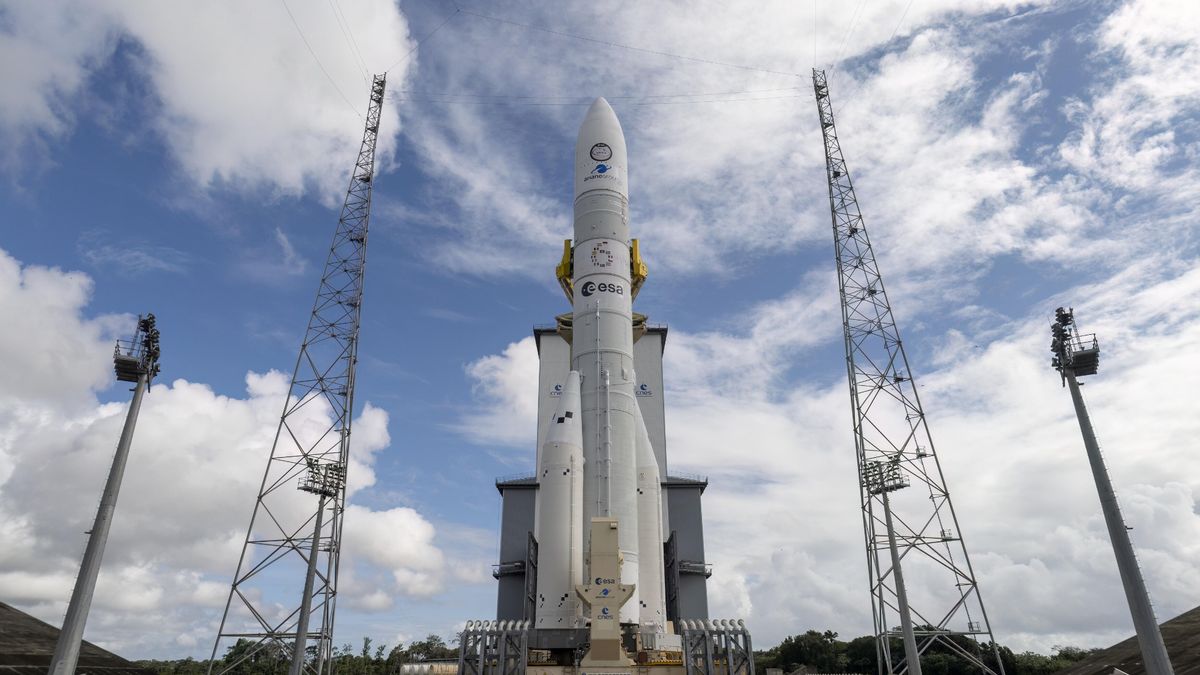Dey, S. et al. Variability of outdoor fine particulate (PM2.5) concentration in the Indian Subcontinent: a remote sensing approach. Remote Sens. Environ. 127, 153–161 (2012).
Li, C. et al. India is overtaking China as the world’s largest emitter of anthropogenic sulfur dioxide. Sci. Rep. 7, 14304 (2017).
2023 World Air Quality Report (IQAir, 2024).
Pandey, A. et al. Health and economic impact of air pollution in the states of India: the Global Burden of Disease Study 2019. Lancet Planet. Health 5, e25–e38 (2021).
Greenstone, M. & Hasenkopf, C. Air Quality Life Index 2023 Annual Update (Energy Policy Institute at the University of Chicago, 2023); https://aqli.epic.uchicago.edu/wp-content/uploads/2023/08/AQLI_2023_Report-Global.pdf
NCAP: National Clean Air Programme (Central Pollution Control Board, Ministry of Environmental Forests and Climate Change, Government of India, 2019); https://moef.gov.in/wp-content/uploads/2019/05/NCAP_Report.pdf
List of 131 Non-Attainment Cities (CPCB, 2023); https://cpcb.nic.in/uploads/Non-Attainment_Cities.pdf
Harish, S. Renewing India’s Air Quality Management Strategy in the Shadow of COVID-19 (Centre for Policy Research, 2021).
Ganguly, T., Selvaraj, K. L. & Guttikunda, S. K. National Clean Air Programme (NCAP) for Indian cities: review and outlook of clean air action plans. Atmos. Environ. X 8, 100096 (2020).
Jacob, D. J. & Winner, D. A. Effect of climate change on air quality. Atmos. Environ. 43, 51–63 (2009).
Singh, N., Agarwal, S., Sharma, S., Chatani, S. & Ramanathan, V. Air pollution over India: causal factors for the high pollution with implications for mitigation. ACS Earth Space Chem. 5, 3297–3312 (2021).
Madineni, V. R. et al. Natural processes dominate the pollution levels during COVID-19 lockdown over India. Sci. Rep. 11, 15110 (2021).
Schnell, J. L. et al. Exploring the relationship between surface PM2.5 and meteorology in Northern India. Atmos. Chem. Phys. 18, 10157–10175 (2018).
Paulot, F., Naik, V. & Horowitz, L. W. Reduction in near-surface wind speeds with increasing CO2 may worsen winter air quality in the Indo-Gangetic Plain. Geophys. Res. Lett. 49, e2022GL099039 (2022).
Gao, M. et al. Seasonal prediction of Indian wintertime aerosol pollution using the ocean memory effect. Sci. Adv. 5, eaav4157 (2019).
Ojha, N. et al. On the widespread enhancement in fine particulate matter across the Indo-Gangetic Plain towards winter. Sci. Rep. 10, 5862 (2020).
Ramanathan, V. et al. Atmospheric brown clouds: impacts on South Asian climate and hydrological cycle. Proc. Natl Acad. Sci. USA 102, 5326–5333 (2005).
Bollasina, M. A., Ming, Y. & Ramaswamy, V. Anthropogenic aerosols and the weakening of the South Asian summer monsoon. Science 334, 502–505 (2011).
Li, Z. et al. Aerosol and boundary-layer interactions and impact on air quality. Natl Sci. Rev. 4, 810–833 (2017).
Lin, M. et al. Vegetation feedbacks during drought exacerbate ozone air pollution extremes in Europe. Nat. Clim. Change 10, 444–451 (2020).
Xie, Y., Lin, M. & Horowitz, L. W. Summer PM2.5 pollution extremes caused by wildfires over the western United States during 2017–2018. Geophys. Res. Lett. 47, e2020GL089429 (2020).
Xie, Y. et al. Tripling of western US particulate pollution from wildfires in a warming climate. Proc. Natl Acad. Sci. USA 119, e2111372119 (2022).
Zhang, Q. et al. Drivers of improved PM2.5 air quality in China from 2013 to 2017. Proc. Natl Acad. Sci. USA 116, 24463–24469 (2019).
Zhai, S. et al. Fine particulate matter (PM2.5) trends in China, 2013–2018: separating contributions from anthropogenic emissions and meteorology. Atmos. Chem. Phys. 19, 11031–11041 (2019).
National Air Quality Index (CPCB, 2023); https://cpcb.nic.in/National-Air-Quality-Index/
Rahaman, S., Jahangir, S., Chen, R., Kumar, P. & Thakur, S. COVID-19’s lockdown effect on air quality in Indian cities using air quality zonal modeling. Urban Clim. 36, 100802 (2021).
Mahato, S., Pal, S. & Ghosh, K. G. Effect of lockdown amid COVID-19 pandemic on air quality of the megacity Delhi, India. Sci. Total Environ. 730, 139086 (2020).
Guttikunda, S. K., Goel, R. & Pant, P. Nature of air pollution, emission sources, and management in the Indian cities. Atmos. Environ. 95, 501–510 (2014).
New Environmental Norms for the Power Sector (Centre for Science and Environment, 2016); https://cdn.cseindia.org/userfiles/new-environmental-norms-report.pdf
Tibrewal, K. & Venkataraman, C. Climate co-benefits of air quality and clean energy policy in India. Nat. Sustain. 4, 305–313 (2020).
Ganguly, T., Khan, A. & Ganesan, K. What’s Polluting India’s Air? The Need for an Official Air Pollution Emissions Database (Council on Energy, Environment and Water, 2021).
Beale, C. A. et al. Large sub-regional differences of ammonia seasonal patterns over India reveal inventory discrepancies. Environ. Res. Lett. 17, 104006 (2022).
Pai, S. J. et al. Compositional constraints are vital for atmospheric PM2.5 source attribution over India. ACS Earth Space Chem. 6, 2432–2445 (2022).
Saikawa, E. et al. Uncertainties in emissions estimates of greenhouse gases and air pollutants in India and their impacts on regional air quality. Environ. Res. Lett. 12, 065002 (2017).
Manoj, M. R., Satheesh, S. K., Moorthy, K. K., Gogoi, M. M. & Babu, S. S. Decreasing trend in black carbon aerosols over the Indian region. Geophys. Res. Lett. 46, 2903–2910 (2019).
Sharma, S. K., Mandal, T. K., Banoo, R., Rai, A. & Rani, M. Long-term variation in carbonaceous components of PM2.5 from 2012 to 2021 in Delhi. Bull. Environ. Contam. Toxicol. 109, 502–510 (2022).
Mani, S., Agrawal, S., Jain, A. & Ganesan, K. State of Clean Cooking Energy Access in India: Insights from the India Residential Energy Survey (IRES) 2020 (Council on Energy, Environment and Water, 2021).
Chowdhury, S. et al. Indian annual ambient air quality standard is achievable by completely mitigating emissions from household sources. Proc. Natl Acad. Sci. USA 116, 10711–10716 (2019).
Coal Consumption in India from 1998 to 2022. Statista https://www.statista.com/statistics/265492/indian-coal-consumption-in-oil-equivalent (2023).
A Review Report on New SO2 Norms (CEA, 2021); https://cea.nic.in/wp-content/uploads/tprm/2021/08/A_review_report_on_new_SO2_norms.pdf
Emission Norms for Passenger Cars, Heavy Diesel Vehicles and 2/3 Wheeler (CPCB, 2017).
Jayaraman, K. S. Indo-Gangetic plains are ammonia hotspot of the world. Nat. India 740, 139986 (2020).
Kuttippurath, J. et al. Record high levels of atmospheric ammonia over India: spatial and temporal analyses. Sci. Total Environ. 740, 139986 (2020).
Gani, S. et al. Submicron aerosol composition in the world’s most polluted megacity: the Delhi Aerosol Supersite study. Atmos. Chem. Phys. 19, 6843–6859 (2019).
Lucknow tops clean air survey among India’s 47 biggest cities. The Times of India (4 December 2022); https://invest.up.gov.in/wp-content/uploads/2022/12/Lucknow-tops-clean-air-survey_041222.pdf
Hunt, K. M. R., Turner, A. G. & Shaffrey, L. C. The evolution, seasonality and impacts of western disturbances. Q. J. R. Meteorol. Soc. 144, 278–290 (2018).
Hunt, K. M. R. & Zaz, S. N. Linking the North Atlantic Oscillation to winter precipitation over the Western Himalaya through disturbances of the subtropical jet. Clim. Dynam. 60, 2389–2403 (2023).
Madhura, R. K., Krishnan, R., Revadekar, J. V., Mujumdar, M. & Goswami, B. N. Changes in western disturbances over the Western Himalayas in a warming environment. Clim. Dynam. 44, 1157–1168 (2014).
Chug, D. et al. Observed evidence for steep rise in the extreme flow of Western Himalayan rivers. Geophys. Res. Lett. 47, e2020GL087815 (2020).
Horton, D. E., Skinner, C. B., Singh, D. & Diffenbaugh, N. S. Occurrence and persistence of future atmospheric stagnation events. Nat. Clim. Change 4, 698–703 (2014).
Hunt, K. M. R., Turner, A. G. & Shaffrey, L. C. Falling trend of western disturbances in future climate simulations. J. Clim. 32, 5037–5051 (2019).
Ravishankara, A. R., David, L. M., Pierce, J. R. & Venkataraman, C. Outdoor air pollution in India is not only an urban problem. Proc. Natl Acad. Sci. USA 117, 28640–28644 (2020).
Lu, Z., Streets, D. G., de Foy, B. & Krotkov, N. A. Ozone monitoring instrument observations of interannual increases in SO2 emissions from Indian coal-fired power plants during 2005-2012. Environ. Sci. Technol. 47, 13993–14000 (2013).
Pant, P. et al. Monitoring particulate matter in India: recent trends and future outlook. Air Qual. Atmos. Health 12, 45–58 (2018).
Continuous Ambient Air Quality Monitoring Network (CPCB, 2023); https://airquality.cpcb.gov.in/ccr/#/caaqm-dashboard-all/caaqm-landing
Technical Specifications For Continuous Ambient Air Quality Monitoring (CAAQM) Station (CPCB, accessed 12 January 2024); https://erc.mp.gov.in/Documents/doc/Guidelines/CAAQMS_Specs_new.pdf
Sharma, D. & Mauzerall, D. Analysis of air pollution data in India between 2015 and 2019. Aerosol Air Qual. Res. 22, 210204 (2022).
Barrero, M. A., Orza, J. A., Cabello, M. & Canton, L. Categorisation of air quality monitoring stations by evaluation of PM10 variability. Sci. Total Environ. 524–525, 225–236 (2015).
Singh, V. et al. Diurnal and temporal changes in air pollution during COVID-19 strict lockdown over different regions of India. Environ. Pollut. 266, 115368 (2020).
Ambient (outdoor) air pollution database 2018. World Health Organization https://www.who.int/data/gho/data/themes/air-pollution/who-air-quality-database/2018 (2018).
Hoesly, R. M. et al. Historical (1750–2014) anthropogenic emissions of reactive gases and aerosols from the Community Emissions Data System (CEDS). Geosci. Model Dev. 11, 369–408 (2018).
Klimont, Z. et al. Global anthropogenic emissions of particulate matter including black carbon. Atmos. Chem. Phys. 17, 8681–8723 (2017).
Crippa, M. G. et al. EDGAR v6.1 Global Air Pollutant Emissions (Joint Research Centre, European Commission, 2022); http://data.europa.eu/89h/df521e05-6a3b-461c-965a-b703fb62313e
Sadavarte, P. & Venkataraman, C. Trends in multi-pollutant emissions from a technology-linked inventory for India: I. industry and transport sectors. Atmospheric Environ. 99, 353–364 (2014).
Speciated Multipollutant Generator. SMOG-India https://ncapcoalesce.iitb.ac.in/resources/smog-india-emission-inventory/ (2022).
Pandey, A., Sadavarte, P., Rao, A. B. & Venkataraman, C. A technology-linked multi-pollutant inventory of Indian energy-use emissions: II. residential, agricultural and informal industry sectors, Atmospheric Environ. 99, 341–352 (2014).
Development of Spatially Resolved Air Pollution Emission Inventory of India. (The Energy and Resources Institute, 2021).
McDuffie, E. E. et al. A global anthropogenic emission inventory of atmospheric pollutants from sector- and fuel-specific sources (1970–2017): an application of the Community Emissions Data System (CEDS). Earth Syst. Sci. Data 12, 3413–3442 (2020).
Li, C., Krotkov, N. A. & Leonard, P. OMI/Aura Sulfur Dioxide (SO2) Total Column L3 1 Day Best Pixel in 0.25 Degree x 0.25 Degree V3 (Goddard Earth Sciences Data and Information Services Center, accessed 12 January 2024).
Krotkov, N. A. et al. OMI/Aura NO2 Cloud-Screened Total and Tropospheric Column L3 Global Gridded 0.25 Degree x 0.25 Degree V3 (NASA Goddard Space Flight Center, Goddard Earth Sciences Data and Information Services Center, accessed 12 January 2024).
van Geffen, J. H. G. M., Eskes, H. J., Boersma, K. F., Maasakkers, J. D. & Veefkind, J. P. TROPOMI ATBD of the Total and Tropospheric NO2 Data Products Report NO. S5P-KNMI-L2-0005-RP (KNMI, 2022).
Whitburn, S. et al. A flexible and robust neural network IASI-NH3 retrieval algorithm. J. Geophys. Res. Atmos. 121, 6581–6599 (2016).
Van Damme, M. et al. Version 2 of the IASI NH3 neural network retrieval algorithm: near-real-time and reanalysed datasets. Atmos. Meas. Tech. 10, 4905–4914 (2017).
Franco, B. et al. A general framework for global retrievals of trace gases from IASI: application to methanol, formic acid, and PAN. J. Geophys. Res. Atmos. 123, 13963–13984 (2018).
Van Damme, M. et al. Global, regional and national trends of atmospheric ammonia derived from a decadal (2008–2018) satellite record. Environ. Res. Lett. 16, 055017 (2021).
Hersbach, H. et al. The ERA5 global reanalysis. Q. J. R. Meteorol. Soc. 146, 1999–2049 (2020).
Nakoudi, K., Giannakaki, E., Dandou, A., Tombrou, M. & Komppula, M. Planetary boundary layer height by means of lidar and numerical simulations over New Delhi, India. Atmos. Meas. Tech. 12, 2595–2610 (2019).
Tai, A.P.K., Mickley, L. J. & Jacob, D. J. Impact of 2000–2050 climate change on fine particulate matter (PM2.5) air quality inferred from a multi-model analysis of meteorological modes. Atmos. Chem. Phys. 12, 11329–11337 (2012).
Shen, L., Mickley, L. J. & Murray, L. T. Influence of 2000–2050 climate change on particulate matter in the United States: results from a new statistical model. Atmos. Chem. Phys. 17, 4355–4367 (2017).
Grell, G. A. et al. Fully coupled ‘online’ chemistry within the WRF model. Atmos. Environ. 39, 6957–6975 (2005).
Zhou, M. et al. Environmental benefits and household costs of clean heating options in northern China. Nat. Sustain. 5, 329–338 (2022).
Buchholz, R. R., Emmons, L. K., Tilmes, S. & The CESM2 Development Team CESM2.1/CAM-chem Instantaneous Output for Boundary Conditions (Atmospheric Chemistry Observations and Modeling Laboratory, UCAR/NCAR, 2019).
Guenther, A. et al. Estimates of global terrestrial isoprene emissions using MEGAN (Model of Emissions of Gases and Aerosols from Nature). Atmos. Chem. Phys. 6, 3181–3210 (2006).
Zhou, M. et al. The impact of aerosol–radiation interactions on the effectiveness of emission control measures. Environ. Res. Lett. 14, 024002 (2019).

Sarah Wilson is your guide to the latest trends, viral sensations, and internet phenomena. With a finger on the pulse of digital culture, she explores what’s trending across social media and pop culture, keeping readers in the know about the latest online sensations.








